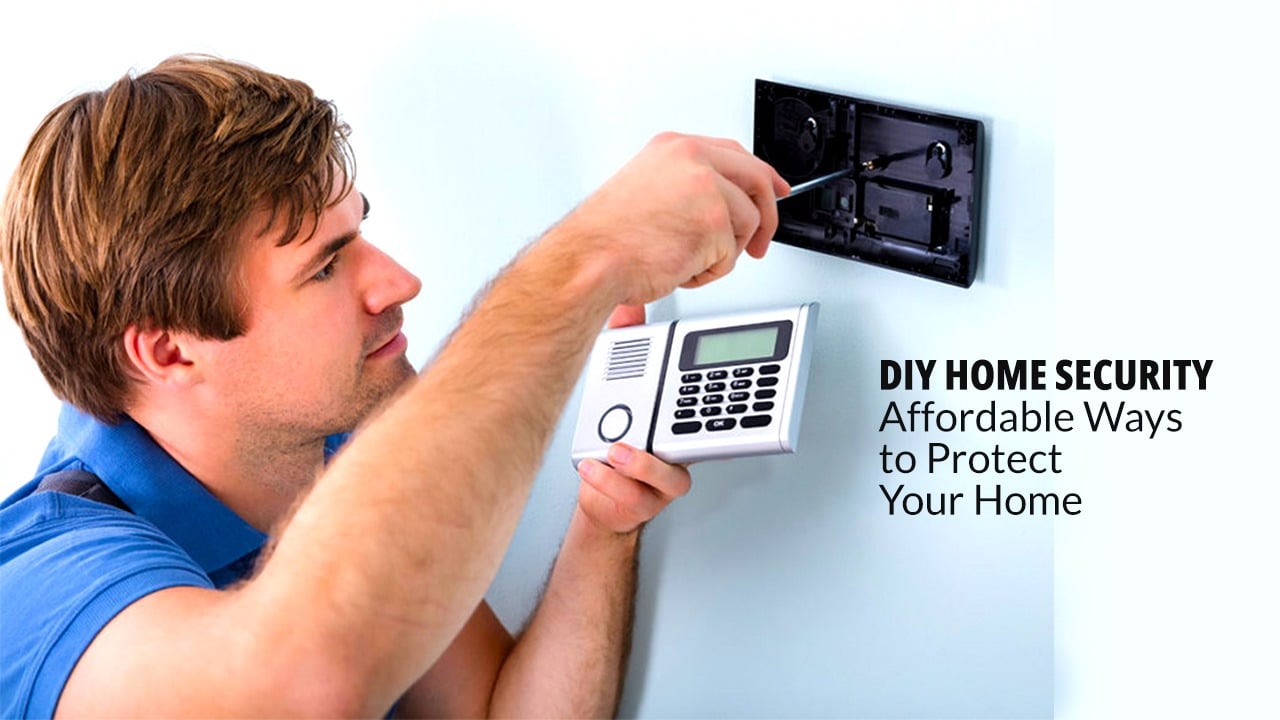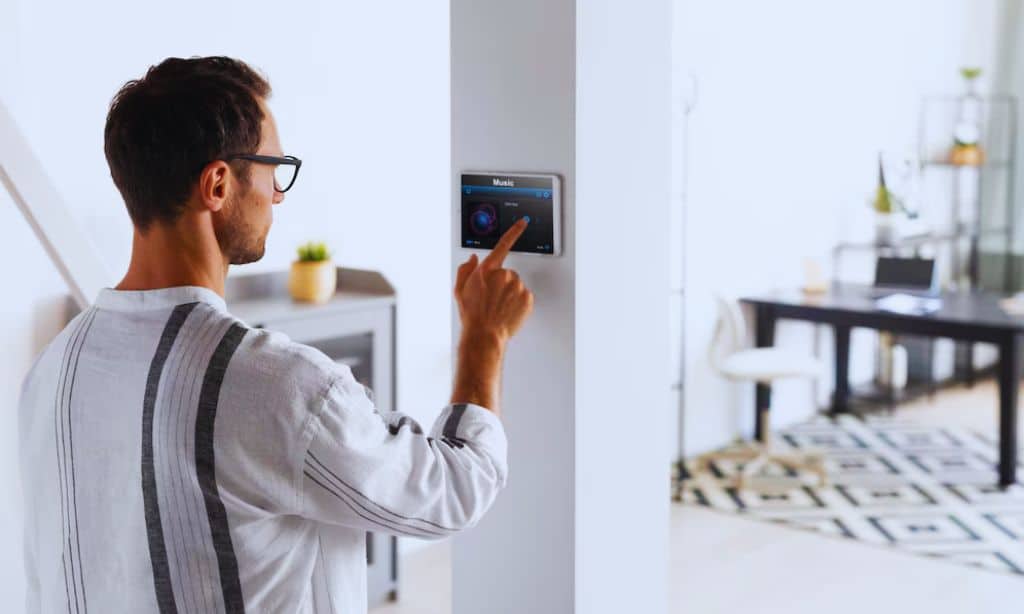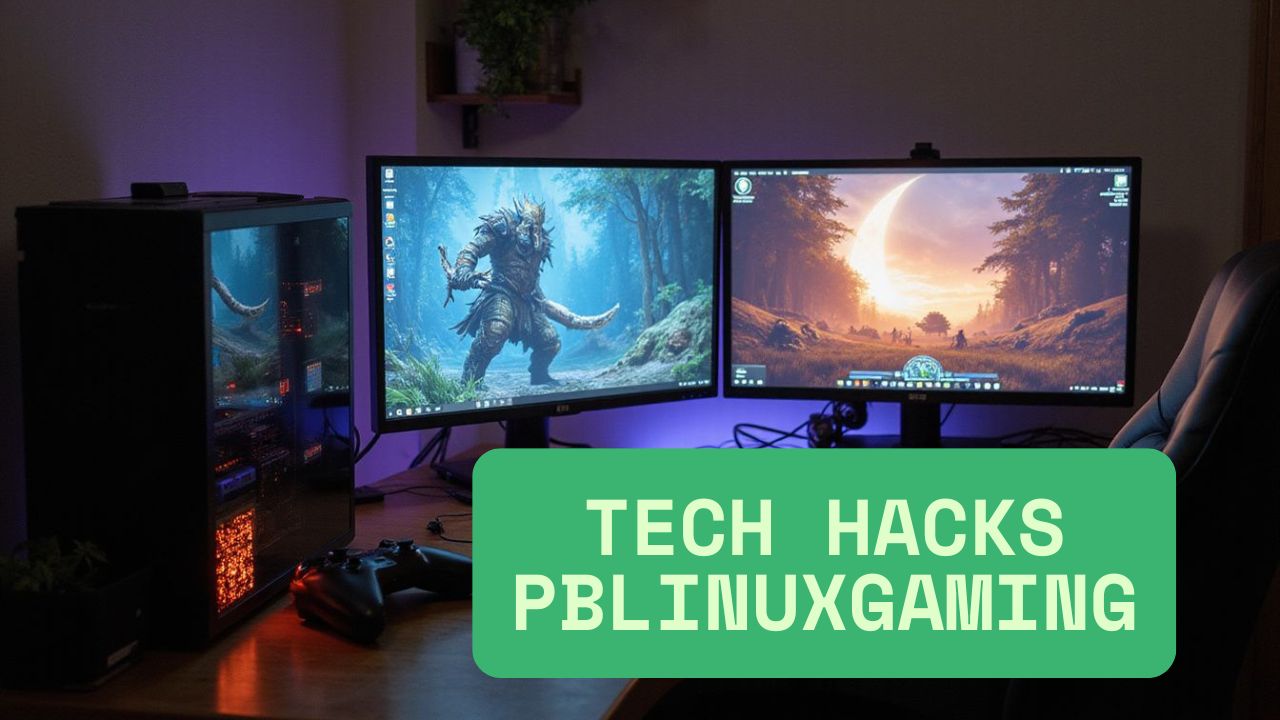In a world where security concerns are ever-present, protecting our homes has become a top priority for many of us. Yet, the thought of expensive alarm systems or professional installations can be daunting. This is where DIY home security steps in, offering affordable ways to protect your home without breaking the bank. So, are you ready to become the MacGyver of home security? Let’s dive in and start protecting your home in an affordable manner.
Understanding Home Security Basics
Before we roll up our sleeves and get into the nitty-gritty, let’s chat about the basics of home security. It’s kinda like building a house – you gotta start with a solid foundation.
The main goal here is twofold:
- Make your home look about as appealing to burglars as a vegetarian restaurant is to a steak lover.
- Set up a system that’ll catch any sneaky intruders faster than your dog spots a squirrel in the backyard.
To do this, we’re gonna focus on four key areas:
- Entry points: Think doors and windows – basically, any place where someone uninvited might try to sneak in.
- Outdoor spaces: Your yard, driveway, and the area around your house.
- Indoor monitoring: Keeping an eye on what’s happening inside your home.
- Deterrents: Stuff that makes burglars go, “Nah, not worth it.”
By tackling these areas, you’ll be well on your way to creating a DIY security system that’ll make professional burglars consider a career change.
Affordable Ways to Protect Your Home
Whether you’re a homeowner or renter, you have the power to significantly enhance your home’s safety. In this guide, we’ll explore a range of strategies, from simple physical improvements to smart home integrations, that you can implement yourself. We’ll delve into how to reinforce entry points, leverage technology for surveillance, use landscaping as a deterrent, and even involve your community in creating a safer neighborhood. Here’s how you can DIY home security in the most affordable way,
Doors: Your First Line of Defense
Alright, let’s talk doors. They’re not just for dramatic exits – they’re your home’s bouncers, keeping the riff raff out. Here’s how to make them tougher than a two-dollar steak:
- Upgrade your locks: Deadbolts are your new best friend. For about $20-$30, you can get a solid deadbolt that’ll give burglars more trouble than a Rubik’s cube. Look for ones that are ANSI Grade 1 – that’s the cream of the crop in lock standards.
- Reinforce door frames: Ever seen those movies where the bad guy kicks in the door? Yeah, that’s not just Hollywood magic. Many doors are about as sturdy as a house of cards. But fear not! A door reinforcement kit (around $70-$100) can turn your door into Fort Knox. These kits usually include a reinforced strike plate and longer screws that anchor into the wall studs.
- Install a peephole or video doorbell: Wanna know who’s knocking without opening the door? A peephole is your low-tech answer, and it’ll set you back less than a large pizza (under $10). But if you want to get fancy, video doorbells start around $100. They’re like having a tiny security guard that fits in your pocket – you can see and talk to visitors through your phone, even when you’re not home.
- Use door sensors: These nifty gadgets are like alarm clocks for your doors. They’ll let you know if someone’s trying to sneak in for a midnight snack (or, you know, your valuables). Basic models start at about $20, and they’re usually wireless, so installation is a breeze.
- Don’t forget the garage: If your garage connects to your house, that door needs love too. Install a deadbolt and consider a smart garage door opener that’ll alert you if it’s left open.
Windows: The Overlooked Vulnerability
Windows are great for letting in sunshine and fresh air, but they’re also a burglar’s best friend if left unsecured. Let’s change that:
- Install window locks: These little guys are cheap as chips (a few bucks each) and can be installed faster than you can say “secure home.” For double-hung windows, pin locks are super effective and easy to install.
- Use window security film: This clear film is like invisible armor for your windows. It makes them harder to break, buying you precious time if someone tries to smash their way in. It costs about $35-$100 per window, depending on size. Pro tip: Focus on ground floor windows first.
- Plant thorny bushes: Who said landscaping can’t be part of your security system? Plant some roses or holly under your windows. They look pretty, smell nice, and will give intruders a prickly surprise.
- Install window sensors: Just like their door cousins, these alert you when a window is opened. They typically cost $20-$30 each. If you’re feeling fancy, some can even detect glass breaking.
- Window bars: For high-risk windows (like those hidden from street view), consider window bars. Modern designs can be quite attractive and don’t have to make your home look like a prison. Prices vary, but expect to pay $100-$400 per window.
- Treat second-story windows seriously: Burglars can be surprisingly athletic. Don’t neglect upstairs windows, especially if they’re near trees or drainpipes.
Outdoor Security Measures
Now that we’ve fortified the castle, let’s talk about the moat – or in this case, your yard. A well-secured outdoor area can stop trouble before it even reaches your door.
Lighting: Burglars’ Worst Nightmare
Burglars are like vampires – they hate the light. Here’s how to keep your yard lit up like a Christmas tree (but, you know, all year round):
- Motion-activated lights: These bad boys are like a spotlight for sneaky intruders. Prices start around $20, and they’re easy to install. Place them near entry points and dark corners of your yard. Some even come with apps so you can control them from your phone.
- Solar-powered lights: Mother Nature’s security guards! These are great for areas far from power outlets. A set of basic solar path lights starts at about $30. Bonus: They’re eco-friendly and won’t bump up your electricity bill.
- Smart bulbs: These are the brainiacs of the lighting world. You can program them to turn on and off at specific times or control them remotely. Prices start around $15 per bulb. Use them in your porch lights or visible indoor lamps to make it look like someone’s always home.
- Timers for indoor lights: Old school but effective. Plug your lamps into timers (about $10 each) to create the illusion of occupancy when you’re out.
- Landscape lighting: Light up pathways and dark corners of your yard. Low-voltage kits start around $100 and can dramatically improve your home’s nighttime appearance and security.
Landscaping for Security: Your Yard’s Secret Weapon
Who knew your green thumb could double as a security expert? Here’s how to make your landscaping work overtime:
- Keep bushes trimmed: Overgrown shrubs are like “HIDE HERE” signs for burglars. Keep them below window level and away from entry points.
- Use gravel: It’s not just for zen gardens! Place gravel under windows and along pathways. It’s noisy underfoot, alerting you to anyone sneaking around.
- Maintain your lawn: A well-kept yard signals that the home is occupied and cared for. It’s like a “No Vacancy” sign for burglars.
- Strategic tree planting: Trees are great, but not when they provide easy access to second-story windows. Keep them at least 10 feet from the house.
- Thorny plants: We mentioned these for windows, but they’re great all around the house. Roses, holly, and barberry bushes are beautiful and painful – the perfect combo!
Fences and Gates: Your Property’s Bouncer
While not the cheapest option, fences and gates can provide an extra layer of security:
- Install a fence: A basic chain-link fence costs about $10-$20 per linear foot. Wood or vinyl privacy fences are pricier but offer more, well, privacy.
- Add a gate: A simple wooden gate can cost $200-$400. For added security, consider an automatic driveway gate, though these can run into the thousands.
- Use padlocks: Secure gates with good quality padlocks, which cost $10-$30. Look for weather-resistant models with hardened steel shackles.
- Consider decorative options: Wrought iron fences and gates can be both beautiful and secure. They’re pricier but can add to your home’s value.
- Height matters: In most areas, residential fences can be up to 6 feet high in backyards and 4 feet in front yards. Check local regulations before building.
Indoor Monitoring and Deterrents
Alright, we’ve secured the perimeter like pros. Now let’s talk about keeping an eye on things inside your home sweet home.
DIY Security Systems: Be Your Own Security Guard
Who needs a fancy security company when you can create your own high-tech security system? Here’s how to do it without needing an engineering degree:
- Smart home hubs: Think of these as the brains of your operation. Devices like Amazon Echo or Google Home can serve as the command center for your DIY security system. Prices start around $50, but watch for sales – they’re often discounted.
- Wireless cameras: These are your eyes when you’re not around. Indoor cameras start at about $25, while outdoor models begin around $40. Look for features like night vision, two-way audio, and cloud storage. Some popular brands include Wyze, Arlo, and Blink.
- Smart sensors: These little gadgets are like the nervous system of your security setup. They can detect motion, open doors/windows, or even water leaks. Prices vary but typically start at $20-$30 per sensor. Place them strategically around your home – entry points, high-traffic areas, and near valuable items.
- Sirens: Nothing says “GET OUT” like a loud alarm. Add an audible siren to your system for about $20-$30. Some smart home hubs have built-in sirens, so check before buying a separate one.
- Smart smoke detectors: These do double duty – protecting you from both fire and intruders. They can send alerts to your phone if they detect smoke or unusual activity. Prices start around $100.
- DIY monitoring: Use your smartphone to keep an eye on things. Most DIY systems offer apps that let you view camera feeds, receive alerts, and even control smart home devices.
Safe Storage: Hide Your Treasure Like a Pro
Let’s face it, if someone does break in, you want to make sure your valuables are safer than Fort Knox. Here’s how:
- Install a safe: A basic home safe costs $30-$150, depending on size and features. Look for fireproof and waterproof options for extra protection. Pro tip: Bolt it to the floor or wall to prevent thieves from simply carrying it off.
- Use diversion safes: These are the Clark Kent of the safe world – ordinary on the outside, super on the inside. They look like everyday objects (think books, cans, or even electrical outlets) but have hidden compartments. They cost $10-$30 and are great for small valuables.
- Consider a gun safe: If you own firearms, a proper gun safe is essential. Prices start around $150 for small models. Look for ones with biometric locks for quick access in emergencies.
- Create a hidden compartment: Channel your inner spy and create a secret hiding spot. This could be a false bottom in a drawer, a hollowed-out book, or even a hidden compartment under the stairs. Just don’t forget where you put it!
- Use the cloud: For important documents and digital assets, consider secure cloud storage. It’s like having a safe that floats in cyberspace.
Security Cameras: Your 24/7 Watch Crew
We touched on cameras earlier, but let’s zoom in (pun intended) on this topic:
- Wired vs. wireless: Wireless cameras are easier to install but may have connectivity issues. Wired cameras are more reliable but harder to set up. Choose based on your tech skills and patience level.
- Indoor vs. outdoor: Make sure outdoor cameras are weatherproof. Look for an IP65 rating or higher.
- Features to consider:
- Night vision: Because burglars don’t take the night off.
- Two-way audio: To scare off intruders or say hi to the delivery person.
- Cloud storage: So you don’t lose footage if the camera is damaged.
- Motion detection: To avoid hours of footage of your cat napping.
- Smart home integration: So your cameras play nice with your other gadgets.
- DIY camera options: Turn an old smartphone into a security camera using free apps like Alfred or Manything. It’s recycling and security in one!
- Placement is key: Cover entry points, but also consider indoor cameras for rooms with valuables. Just be mindful of privacy – nobody wants a camera in the bathroom!
- Fake cameras: While not a substitute for real security, fake cameras (about $10 each) can be a cheap deterrent. Place them visibly alongside your real cameras.
Creating a Security Routine: Habits That Keep You Safe
All the gadgets in the world won’t help if you forget to use them. Let’s talk about creating habits that’ll make security second nature:
- Lock up: Always lock doors and windows, even when you’re home. Make it as automatic as putting on your seatbelt.
- Use your lights: Turn on exterior lights at night and use timers when you’re away. Nothing says “empty house” like a dark home at 8 PM.
- Don’t advertise valuables: Be careful about leaving boxes from expensive items visible on trash day. That new 65-inch TV box is basically a “rob me” sign.
- Know your neighbors: A neighborhood watch can be a powerful deterrent to crime. Plus, you might make some new friends!
- Secure Wi-Fi: Use a strong password and encryption on your home network. Hackers can’t steal what they can’t access.
- Update regularly: Keep your security software and smart home devices updated. Think of it as giving your digital security a booster shot.
- Hide spare keys smartly: Forget the fake rock – everyone knows that trick. If you must have a spare key outside, use a coded lock box or give one to a trusted neighbor.
- Social media mindfulness: Avoid posting about vacations until you’re back home. No need to advertise your empty house to the world.
- Regular security audits: Walk around your property monthly, checking for vulnerabilities. It’s like a health check-up for your home.
- Practice your plan: Have a family plan for emergencies and practice it. It’s like a fire drill, but for security.
Affordable Smart Home Security Options
Welcome to the future, where your home is smarter than some people you know! Let’s explore some budget-friendly smart security options:
- Smart locks: These nifty devices let you lock/unlock doors remotely and track who enters. Prices start around $100. Some even work with your existing deadbolt, saving installation hassle.
- Video doorbells: See who’s at your door from your smartphone, even when you’re not home. Basic models start at about $100. They’re great for catching porch pirates or just avoiding that chatty neighbor.
- Smart smoke detectors: These can alert you to fires even when you’re not home. Prices start around $40. Some can even tell the difference between steam and smoke, so your shower won’t trigger a false alarm.
- Water leak sensors: Protect your home from water damage for about $50 per sensor. Place them near water heaters, under sinks, or in basements. They can save you thousands in potential water damage.
- Smart plugs: Use these $10-$20 devices to control lamps and create the illusion that someone’s home. You can set schedules or control them remotely – perfect for making your empty house look lived-in.
- Motion sensor lights: Indoor smart motion sensor lights (starting at $20) can make it look like someone’s walking around your house at night.
- Smart thermostats: While primarily for energy savings, they can also alert you to unusual temperature changes that might indicate a break-in or fire. Prices start around $100.
- Glass break sensors: These clever devices can distinguish between the sound of breaking glass and other noises, alerting you to potential break-ins. Expect to pay $30-$100 per sensor.
DIY Security on a Budget: Cost Breakdown
Let’s talk money, honey! We know you’re not made of cash, so here’s a breakdown of what a solid DIY security setup might cost for an average-sized home. Remember, you don’t have to do everything at once – start with the basics and build up over time.
Here’s a sample budget for a small to medium-sized home:
| Item | Quantity | Approximate Cost | Total |
| Deadbolts | 2 | $30 each | $60 |
| Door Reinforcement Kit | 1 | $80 | $80 |
| Window Locks | 8 | $5 each | $40 |
| Motion-Activated Lights | 2 | $25 each | $50 |
| Wireless Cameras | 2 | $40 each | $80 |
| Door/Window Sensors | 5 | $20 each | $100 |
| Smart Home Hub | 1 | $50 | $50 |
| Video Doorbell | 1 | $100 | $100 |
| Safe | 1 | $100 | $100 |
| Smart Smoke Detector | 1 | $40 | $40 |
| Total | $700 |
This setup provides significant security improvements for under $700, which is way less than you’d pay for a year of professional monitoring. Plus, there are no monthly fees to worry about!
Remember, you can always start smaller and add more components over time. Here’s a bare-bones starter kit to get you going:
| Item | Quantity | Approximate Cost | Total |
| Deadbolts | 2 | $30 each | $60 |
| Window Locks | 4 | $5 each | $20 |
| Motion-Activated Light | 1 | $25 | $25 |
| Wireless Camera | 1 | $40 | $40 |
| Total | $145 |
This basic setup costs less than $150 and will already make your home much more secure. As your budget allows, you can add more components to build a comprehensive system.
Integrating Smart Home Security: When Your House is Smarter Than You
Welcome to the future, where your toaster might be smarter than your first phone! Smart home security is no longer just for tech geeks – it’s becoming mainstream, affordable, and seriously cool. Let’s dive into how you can integrate smart tech into your DIY security setup:
- Choose a central hub: Start with a smart home hub like Amazon Echo, Google Home, or Apple HomePod. These act as the brain of your smart home, allowing different devices to talk to each other. Prices range from $50 to $200, depending on features.
- Smart doorbells: These are like having a tiny security guard at your door 24/7. They let you see and talk to visitors through your phone, even when you’re not home. Some popular options include Ring (starts at $99) and Arlo (from $129).
- Smart locks: Forget about hiding keys under the mat. Smart locks let you lock and unlock your door remotely, give temporary access codes to guests, and track who comes and goes. Check out options from August (starts at $149) or Schlage (from $199).
- Voice control: Use voice commands to arm your system, lock doors, or turn on lights. It’s not just convenient; it’s also great for those times when you’re already in bed and realize you forgot to set the alarm.
- Automated routines: Set up routines like “Goodnight” that automatically lock doors, turn off lights, and arm the security system. It’s like having a virtual butler!
- Smart lighting: Use smart bulbs or plugs to create the illusion of occupancy when you’re away. You can set random patterns so it doesn’t look too… well, robotic. Philips Hue bulbs start at about $15 each, while smart plugs can be found for under $10.
- Environmental monitoring: Smart smoke detectors and carbon monoxide alarms can alert your phone if something’s amiss, even when you’re not home. Nest Protect is a popular option, starting at $119.
- Water leak detection: Smart water sensors can alert you to leaks before they become floods. Place them near water heaters, under sinks, or in basements. Options like the Govee Water Sensor start at just $30.
- Geofencing: Use your phone’s location to automatically arm or disarm your system when you leave or return home. It’s like your house knows when you’re coming and rolls out the red carpet!
- Integration with other smart devices: Connect your security system with other smart home devices. For example, if your smoke alarm goes off, you could set your smart lights to turn on automatically, making it easier to navigate in an emergency.
Here’s a table comparing some popular smart home security devices:
| Device Type | Popular Brands | Price Range | Key Features |
| Smart Doorbell | Ring, Nest, Arlo | $99 – $250 | Video feed, two-way audio, motion detection |
| Smart Lock | August, Schlage, Yale | $100 – $300 | Remote access, temporary codes, auto-lock |
| Smart Camera | Wyze, Arlo, Blink | $25 – $200 | Night vision, two-way audio, cloud storage |
| Smart Smoke Detector | Nest Protect, First Alert | $40 – $120 | Phone alerts, interconnected alarms |
| Smart Home Hub | Amazon Echo, Google Nest | $50 – $200 | Voice control, device integration |
| Water Leak Sensor | Govee, Fibaro | $30 – $70 | Instant alerts, some with temperature sensing |
Remember, you don’t need to buy everything at once. Start with one or two devices and gradually build your smart home security system as your budget allows. The key is to choose devices that work well together and meet your specific needs.
Takeaway
As we’ve explored, securing your home doesn’t require a large budget or professional expertise. The key lies in a layered approach, combining basic physical measures with modern technology. Start by reinforcing entry points and improving lighting, then gradually incorporate smart devices like cameras and alarm systems. Remember, your landscape can be a powerful deterrent when properly maintained. Community involvement, through neighborhood watch programs and good relationships with neighbors, adds an invaluable layer of security. Regularly assess and update your security measures to stay ahead of potential threats. By implementing these strategies, you’re not just protecting your property; you’re creating a safer environment for you and your loved ones.












































